Last week, Cambo released a new product for their Cambo Actus View Camera, the Cambo EF Aperture Controller. This product, combined with the Cambo Actus, is a game changer. As collaborative partners with Cambo, Capture integration is very excited to have our first shipment of this product and see what capabilities it adds for photographers.
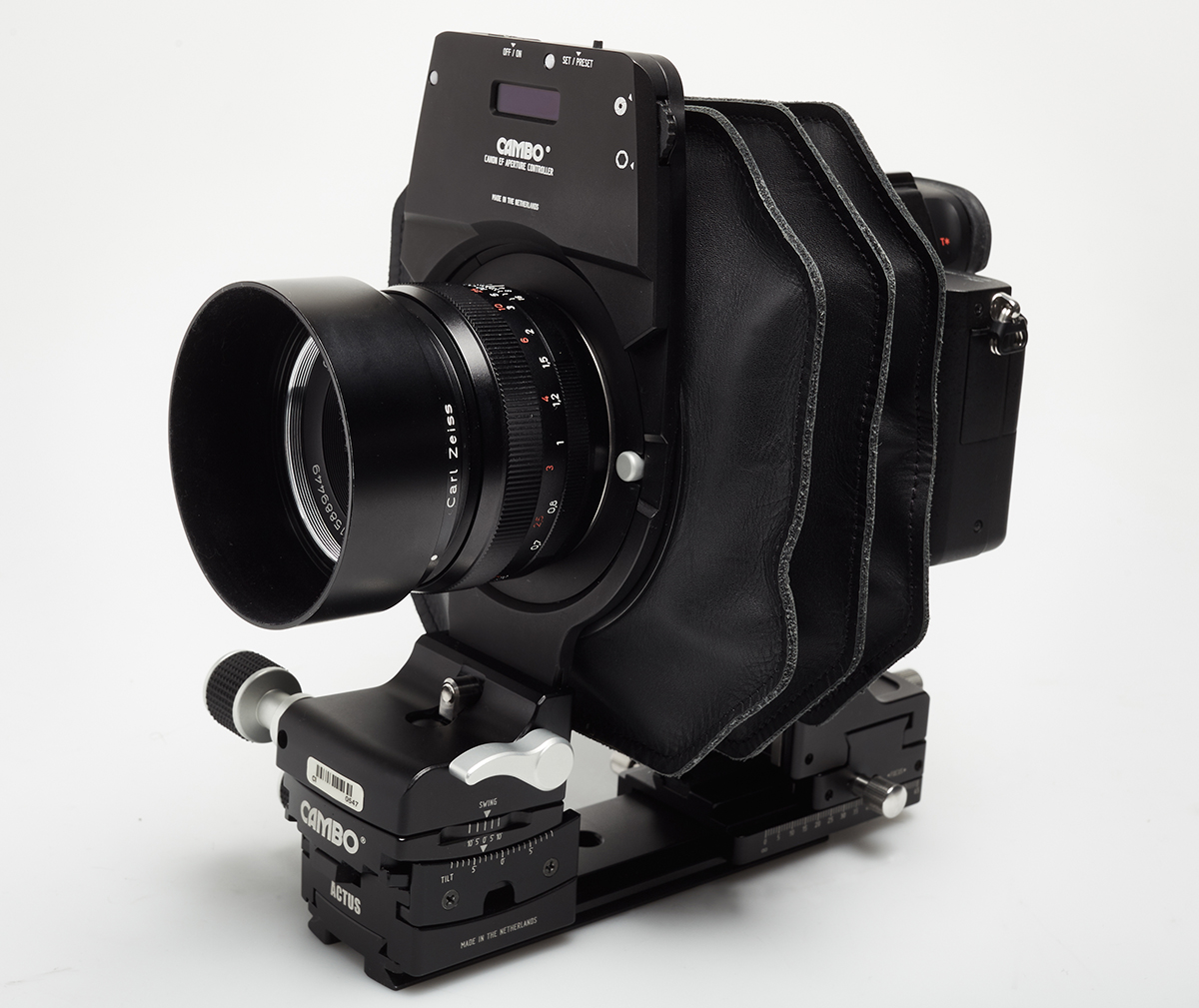
Great products are worth waiting for.
If any traditional photographic equipment manufacturer has created a positive model for evolving into the digital age, it has to be Cambo. Founded in 1945, Cambo made their bones creating, among many other products, excellent 4×5 and 8×10 view cameras – indeed they pioneered the first all metal view camera design. They’ve continued along this path through today. Cambo takes the bold step of stating in no uncertain terms: “View cameras matter, variable focus planes matter, perspective correction matters, bellows extension matters”, and they have attempted to take these gifts of photography and bring them to scale for the digital masses.
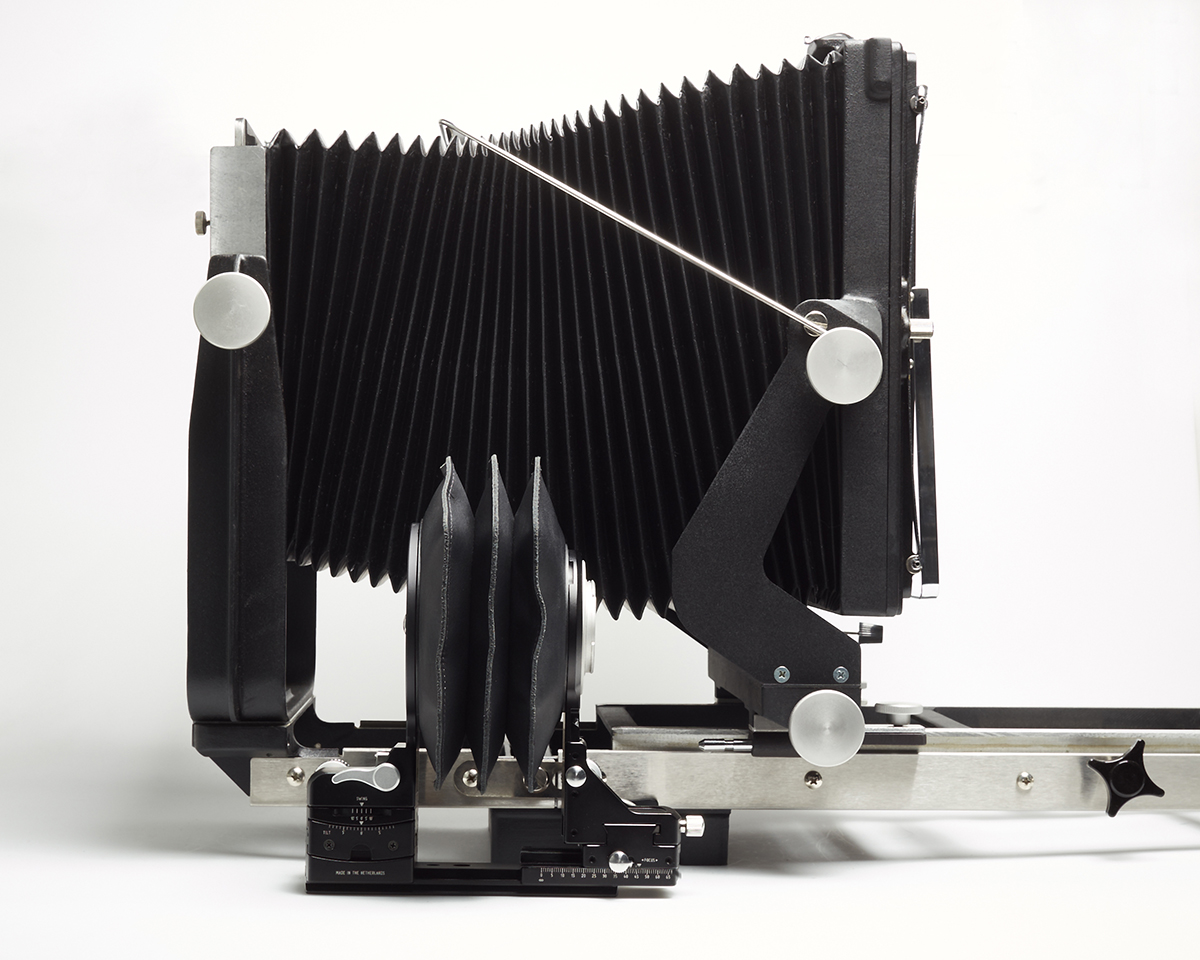
The little one is the Cambo Actus, it cannot accept 8×10 film.
This creates a rather daunting challenge – in this age of instant click, auto everything, how does one convince the mainstream populace of the benefits of manually adjusting multiple planes to modify focus in any part of the image they desire? I suppose the Lytro camera is one of the beginning points of technology trying to address this. But the sheer utility of a view camera still can’t be beat, more than a century after the origin of the category. Software attempts to reproduce some of the capabilities a view camera offers, but still falls short. Cameras now produce amazing image quality at format sizes a fraction of the past giant behemoths. But how to extend the amazing functions of a view camera to these tiny little image making machines? To answer this challenge in the digital age, in Summer 2014 Cambo introduced the Cambo Actus Mini View Camera: http://205.186.138.113/plesk-site-preview/captureintegration.com/205.186.138.113/first-look-cambo-actus/
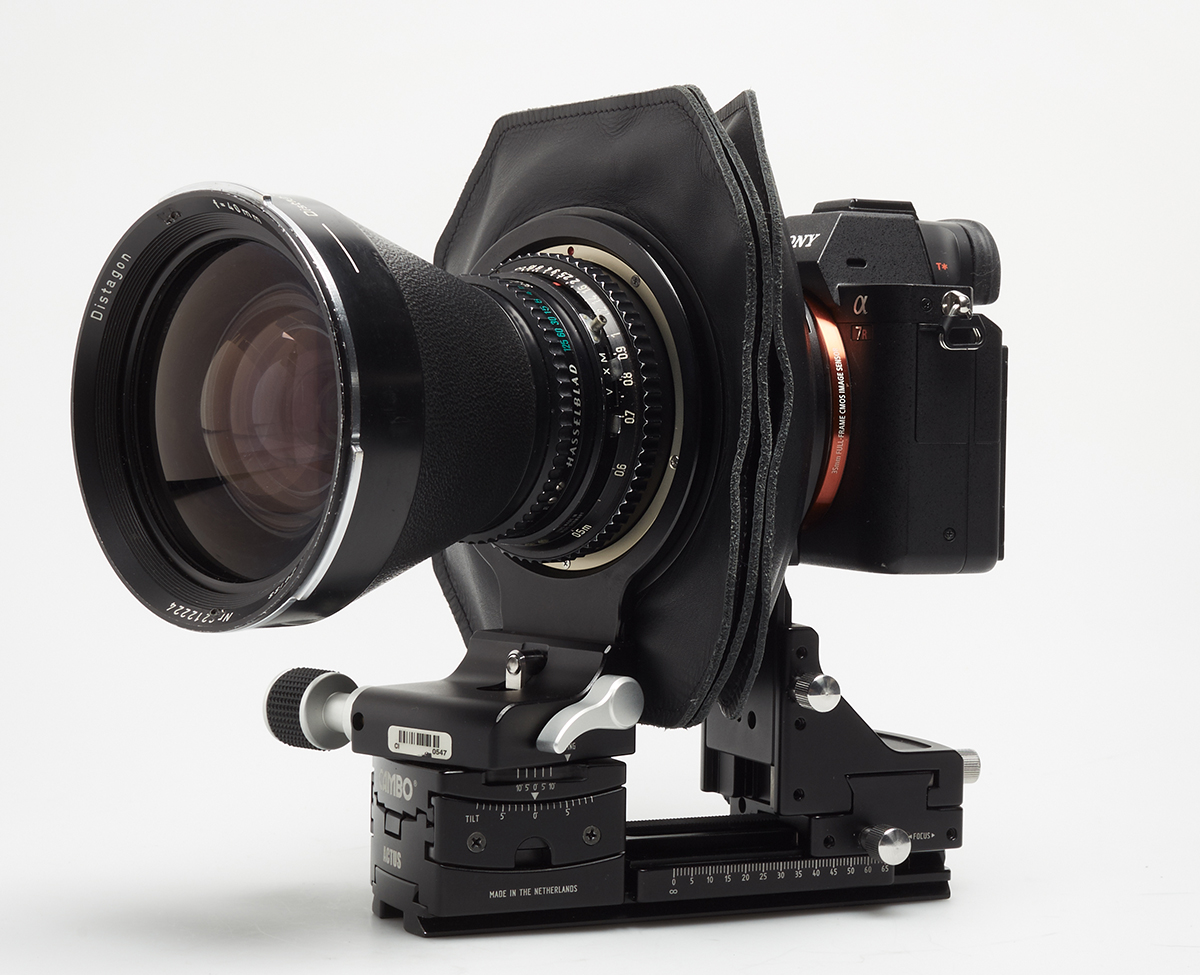
Bringing camera movements to the unknowing (and knowing) small camera masses.
The premise of the Cambo Actus was to allow one to take their Panasonic G-whatever mirrorless camera, their Fuji T1 or X Pro mirrorless camera, or (ideally) their Sony A7R-II mirrorless camera, mount it to the back of the Cambo Actus, and then have a go at a huge variety of lenses from many manufacturers – Mamiya, Hasselblad, Leica, Nikon, Pentax, Schneider, Rodenstock – all of which turn into shift/tilt/swing lenses and with bellows extension.
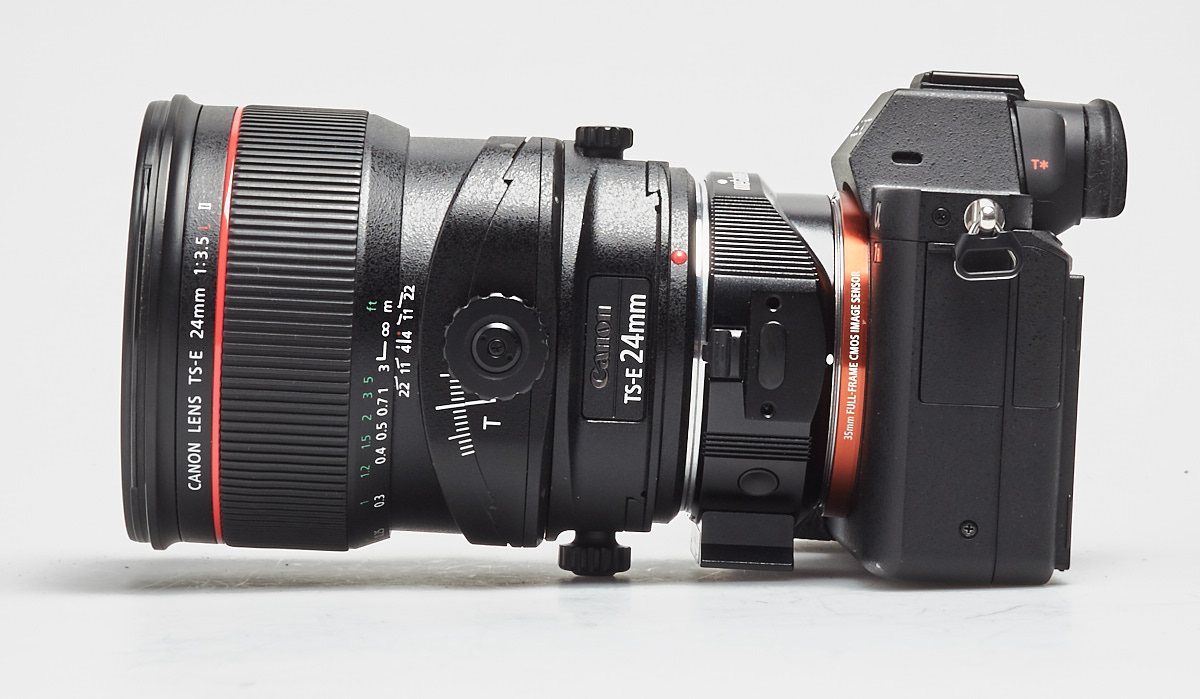
Tilt/Shift on the Sony A7R-II: A few lenses, and limited movements.
While some camera systems offer a few select tilt/shift lenses – Canon (17TSE/24TSE/45TSE/90TSE), Nikon (24PCE/45PCE/85PCE), etc. – the Cambo Actus potentially turns every single Canon EF lens you have into a tilt/shift and swing and additional shift and XY shift lens. This then provides a greater degree of movement and allows combinations not previously possible with a dedicated tilt/shift lens. One limitation with the Cambo Actus is that medium format lenses aren’t very wide when mounted to a 35mm format camera, and while they have very large image circles for shifting, the sharpness at the edges may not satisfy – YMMV. And you may have to produce extreme shifts and stitch many captures together to expand that field of view to classically wide dimensions. We’ve had many ask if they could mount a Canon or Nikon lens to use with their Sony A7R-II on the Cambo Actus. In theory, yes you can, but the image circles may not be that large – these are lenses designed to cover the 35mm format after all, so movements may be limited, and then there’s also the aperture control issue. On modern electronic lenses – you don’t have any control over the aperture without an electronic connection to the body.
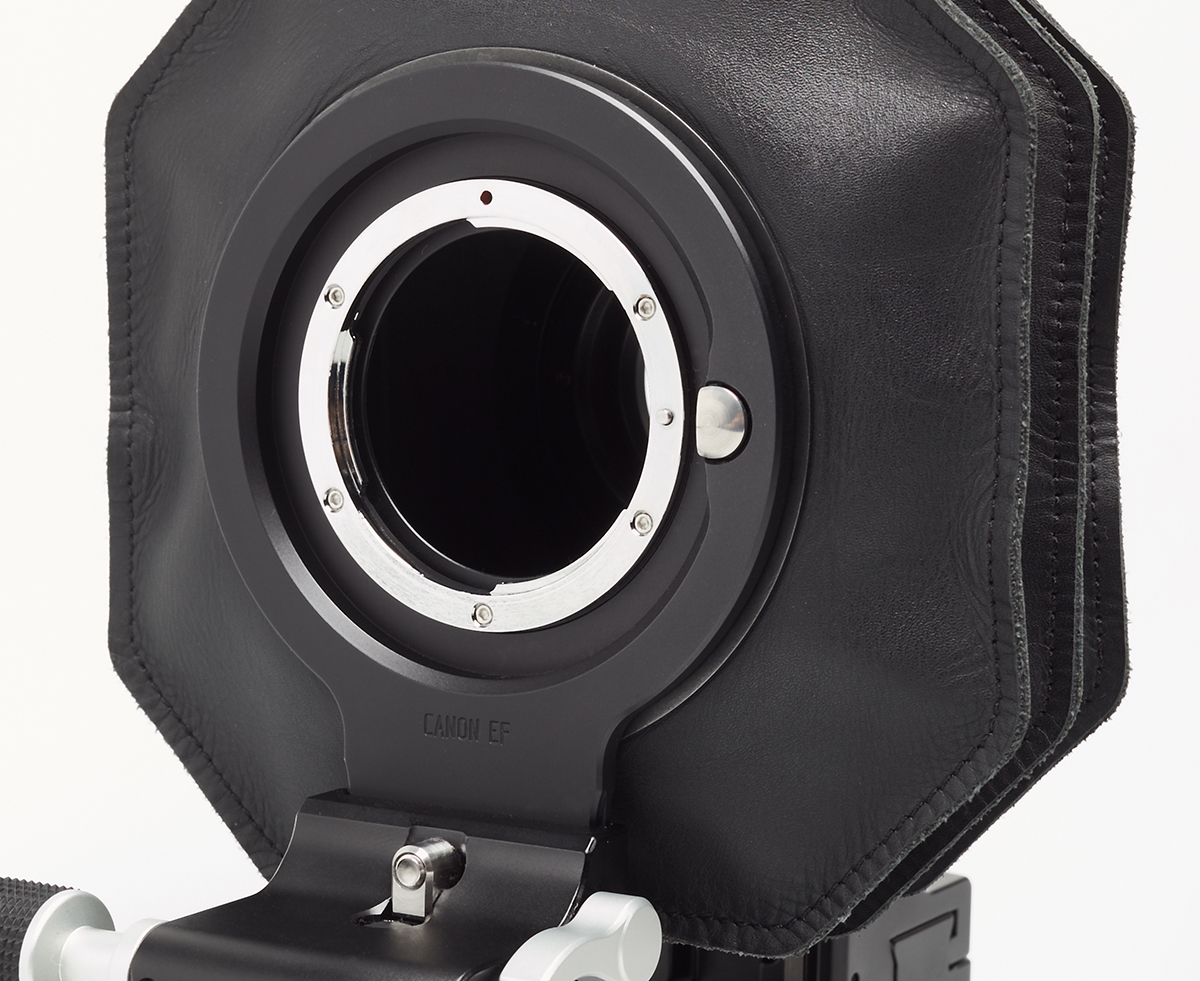
For those dedicated Canon f/11 shooters.
There are tricks to locking electronic lenses into a certain aperture if the camera body offers a depth of field preview button. Set the lens to the desired aperture, press the DOF button, shut the camera off, and the aperture is locked in the aperture selected while pressing the DOF preview button. And Cambo actually created a Canon lensboard for just this purpose – to mount the lens with a pre-set aperture. But most photographers tend to use more than one aperture (!) and most photographers would rather not have to unmount their Canon lens from a view camera, mount it to their Canon body, go through the DOF preview button drill, and re-mount the lens to the Cambo Actus each time they need to make an aperture change.
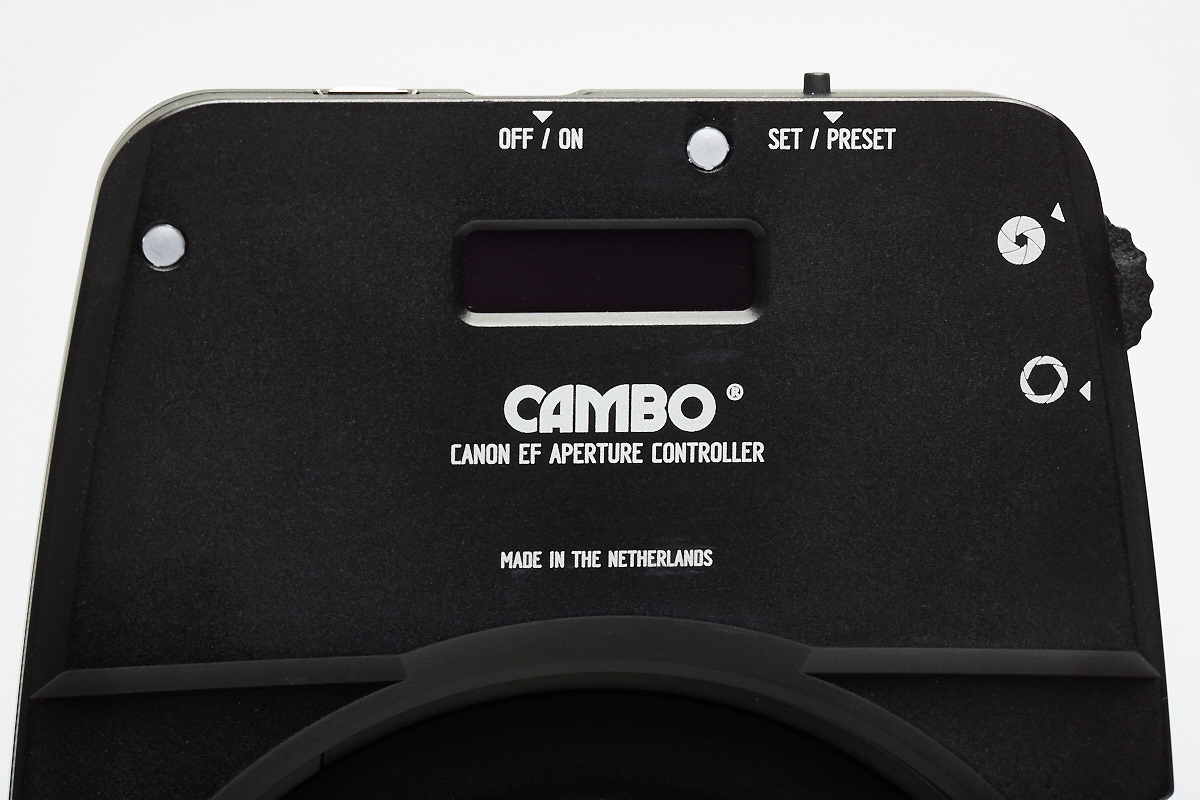
Approaching elegance, it doesn’t get much simpler than this.
This is the problem the Cambo EF Aperture Controller solves. We know the product has been in development for some time, but last week we received the first fruits of Cambo’s labor. The final product is quite different from the original prototypes we had witnessed, and we’re pleased with the revisions. Cambo was correct to take as long as they did to get the product right. As you can see, it is a slim form factor that fits the same way any lensboard fits on the Cambo Actus. The electronic controller is embedded into the adapter. This is a significant change from the early prototype which revealed a separate cabled controller to the base Canon lensboard. In our minds – no cables is a good thing, generally.
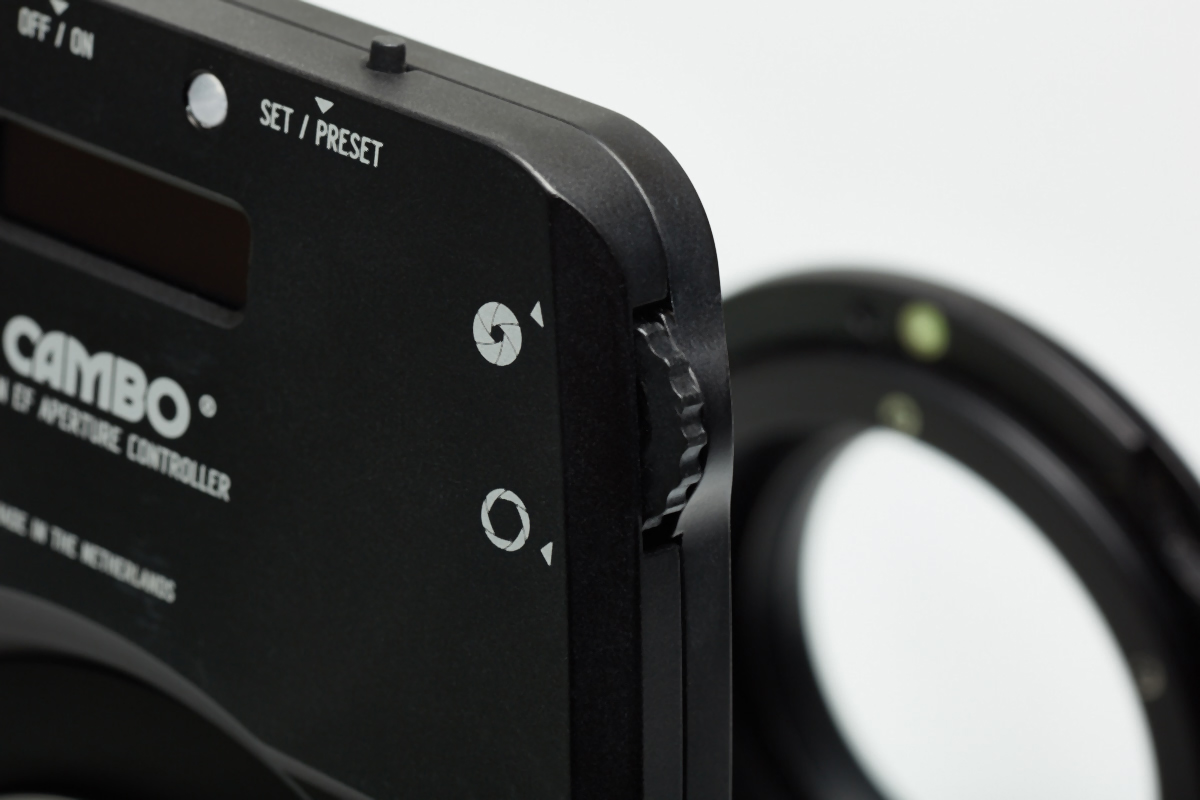
Slim Form Factor Magic!
So – now that it’s here, how does it work, what opportunities does it open up? Functionally, it is a simple operation. An off/on switch resides at the top of the Af Controller Board, an aperture dial on the side. An LED lights up to reflect the aperture selected (and can also display remaining battery power). Turn the aperture dial on the side to stop down the aperture, and once you’ve arrived at your preferred aperture setting, click the short button on the top, and it sets that as the working aperture. Click the button again and you can swap between wide open and your preferred aperture.
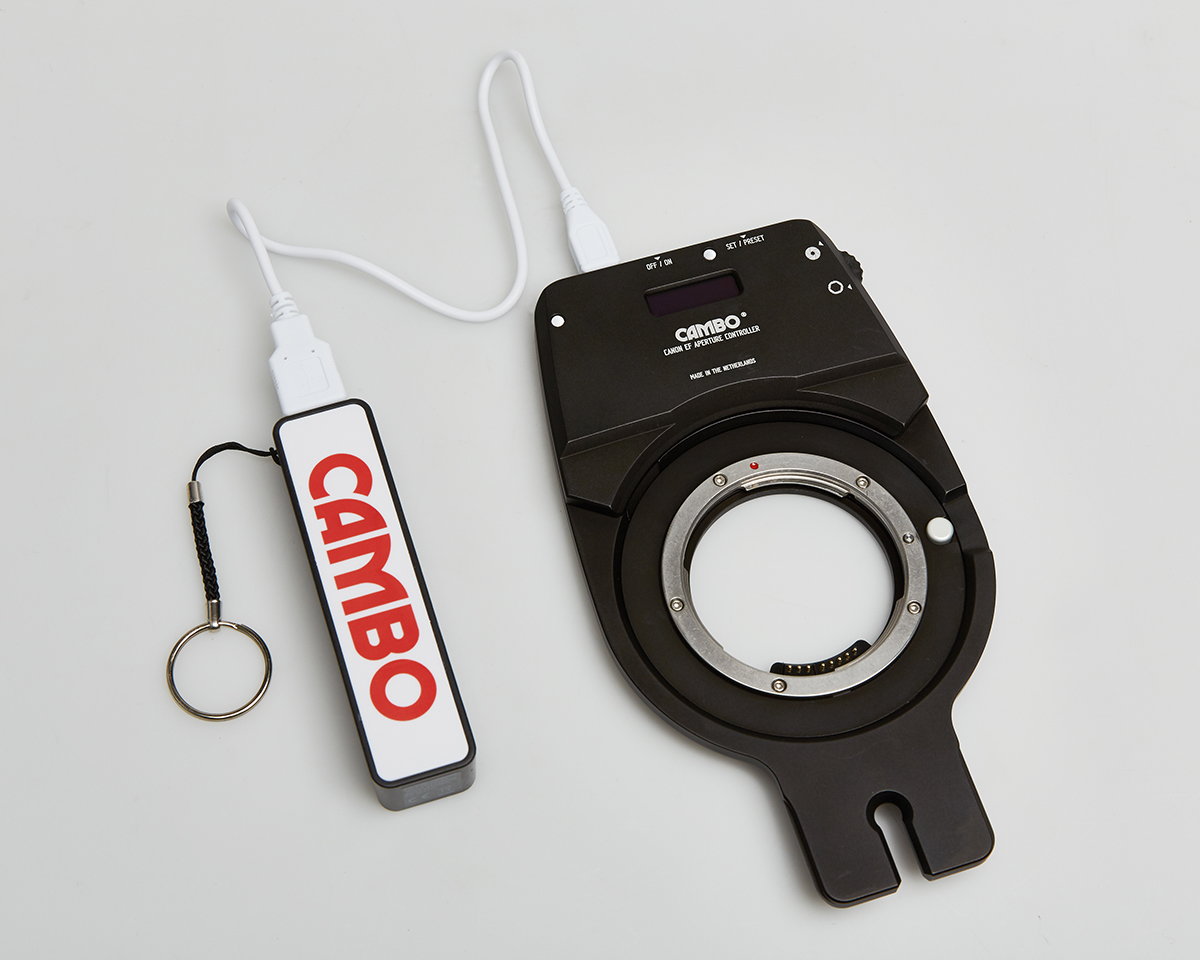
Charge on the go!
That’s pretty much all there is to the operation of the EOS Lens Controller. The package includes a portable charging unit, and a charging cable that fits into a mini USB port on the top of the EF Controller Adapter and plugs into standard USB to charge the internal 900mAh lithium battery. The actual field use is more involved. We’ve experimented with many lenses so far, discovered some limitations, and arrived at some resolutions and conclusions.
First off, you will want to use a wide angle bellows with any wide lens. It’s amazing what a 1 fold vs 3 fold bellows frees up – space wise. Those precious 5 millimeters represent the difference between a lens having next to no movements and a lens becoming a much more versatile tool. The 3 fold bellows impedes downward tilt – the bellows pushes against the underside of the Sony camera. It impedes right turn swing – which pushes up against the larger hand grip of the Sony A7R-II. And infinity focus on very wide lenses is restricted – you simply can’t get the lens close enough to the body. The wide angle bellows removes all those obstacles. It’s essential.
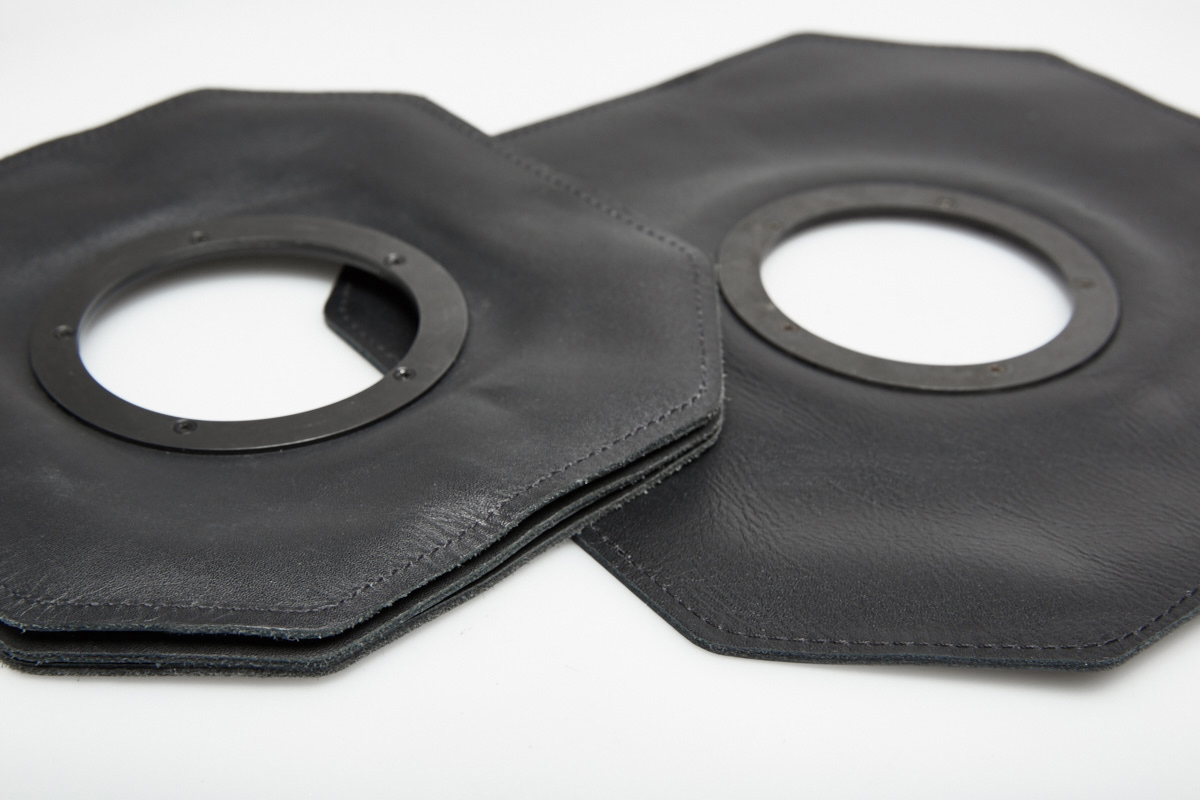
For use with wide lenses, choose the one on the right.
With that out of the way, our first lens target was the Canon 17mm TSE Lens. Why this lens? Well, because it is a very wide lens, and while it has tilt/shift movements, some situations would benefit from the ability to add a swing, or add a horizontal shift to a vertical shift in the same capture (not natively possible with this lens). We were interested in whether A) Can we even focus at infinity with this lens? B) Will we have any ability to use the additional Actus movements?The answer is absolutely yes on both counts. You can combine movements to the point you’ll see the edge of the image circle. Most importantly, adding a swing or combining a horizontal shift with a vertical shift are totally doable. I also experimented with a double shift, adding a horizontal shift from the Cambo to a maximum horizontal lens shift on the 17TSE and found that the edges smeared significantly, so again, YMMV. But the possibilities of this lens are certainly extended.
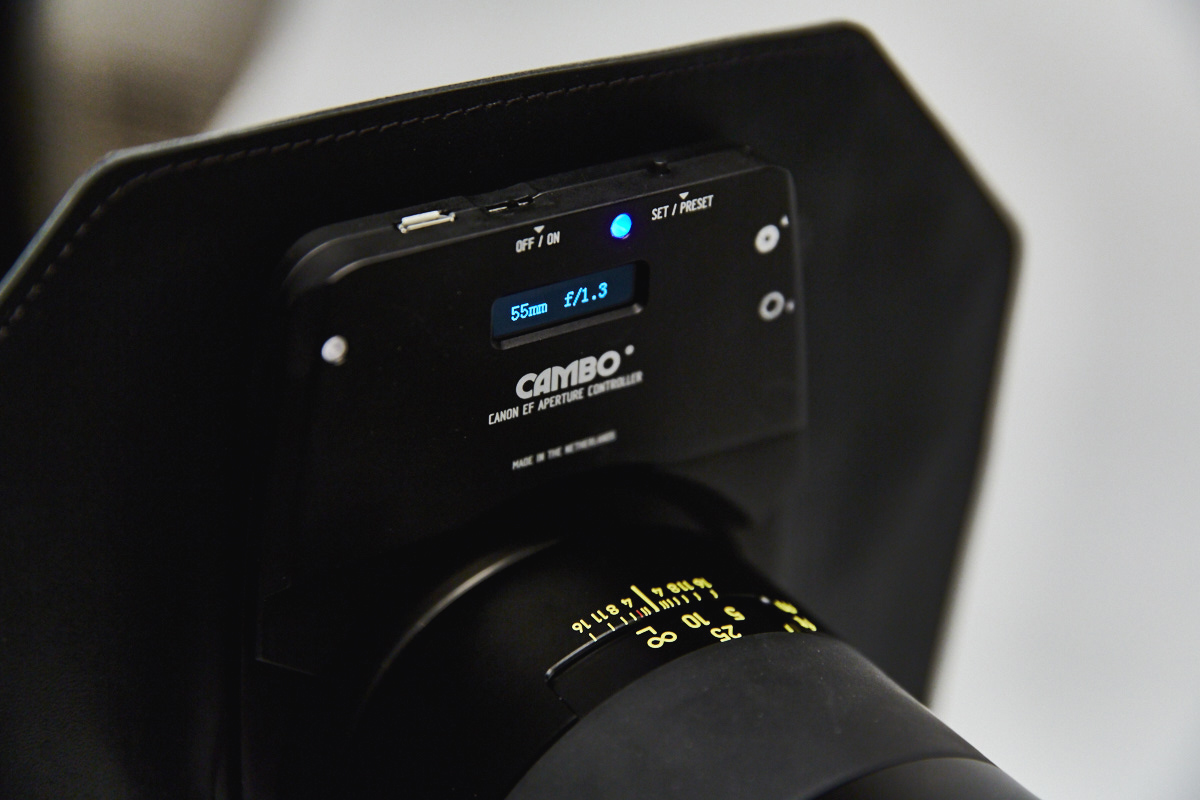
With the Zeiss Otus 55/1.4 you actually gain an additional 1/30th of a stop!
But that is only one small benefit of the EOS Controller Adapter. Remember – what this does is turn any lens in a Canon EF mount into a tilt/shift/swing lens. Zeiss Otus 55/1.4? Check. Canon 100mm Macro? Check. Sigma 35mm Art Lens? Check. All the Canon lenses, your 100mm macro lens gains some critical tilt capability. Zoom lenses become even more versatile. One thing to keep in mind – you will need a mirrorless camera – these lenses, since they’re removed from the Canon body they are set to, will simply not achieve focus with any additional extension between camera and lens. Mirrored DSLR bodies from Canon, Nikon, etc, will not benefit from the Cambo EF Aperture Controller.
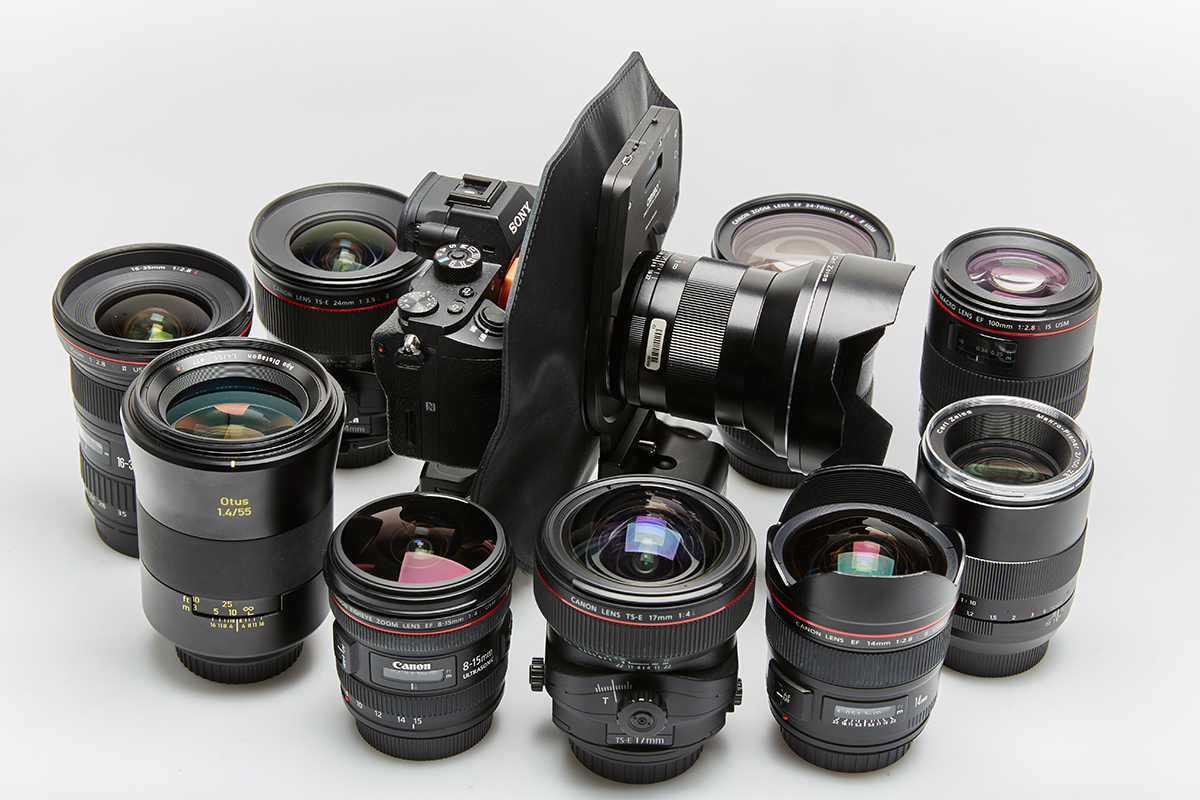
A bounty of more than you think photographic goodness, thanks to Cambo.
So – how does it perform in the field, what can we do that we couldn’t do before? In one of our field tests, I pulled a Canon 24mm TSE Lens out to pair with the Sony A7R-II and the Cambo Actus. I shot several frames, as can be seen below. The degree of movement is listed for each capture. When using the wider lenses, you will need to remember to set the lens focus ring to infinity.
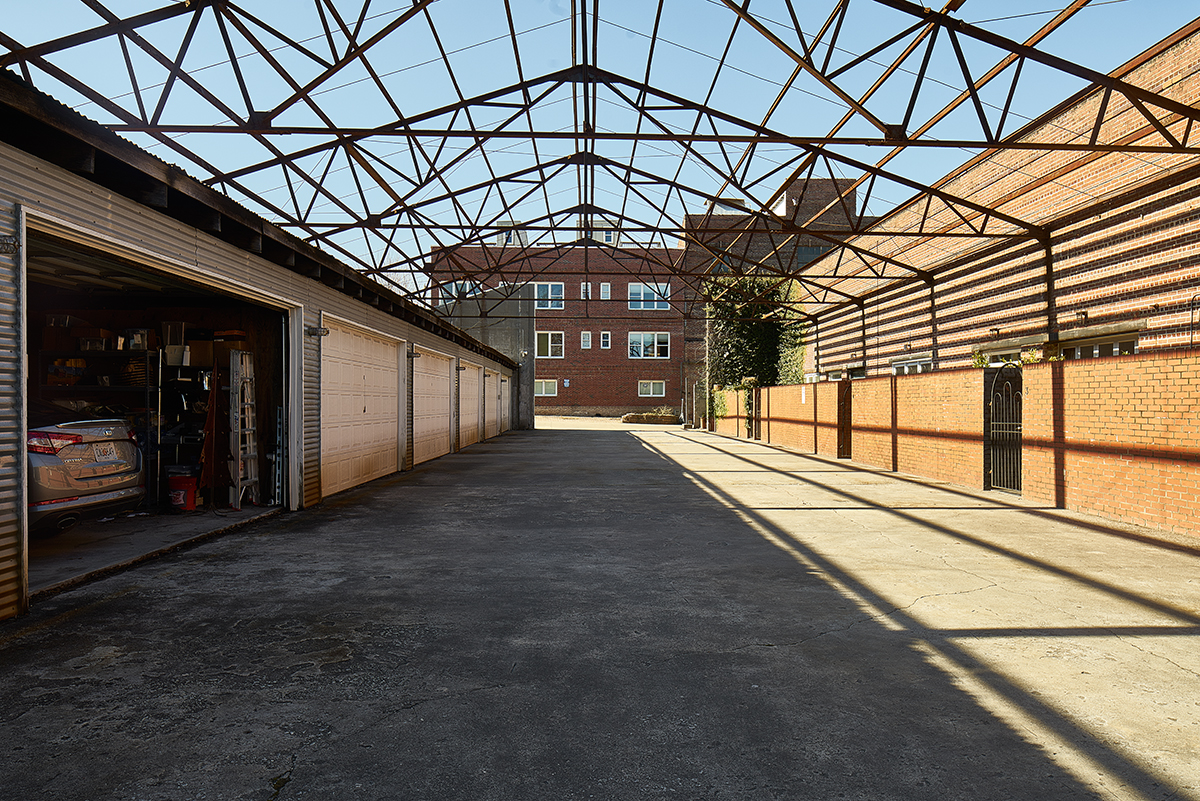
Frame 1: Canon 24mm TSE, Sony A7R-II, Cambo Actus – No movement.
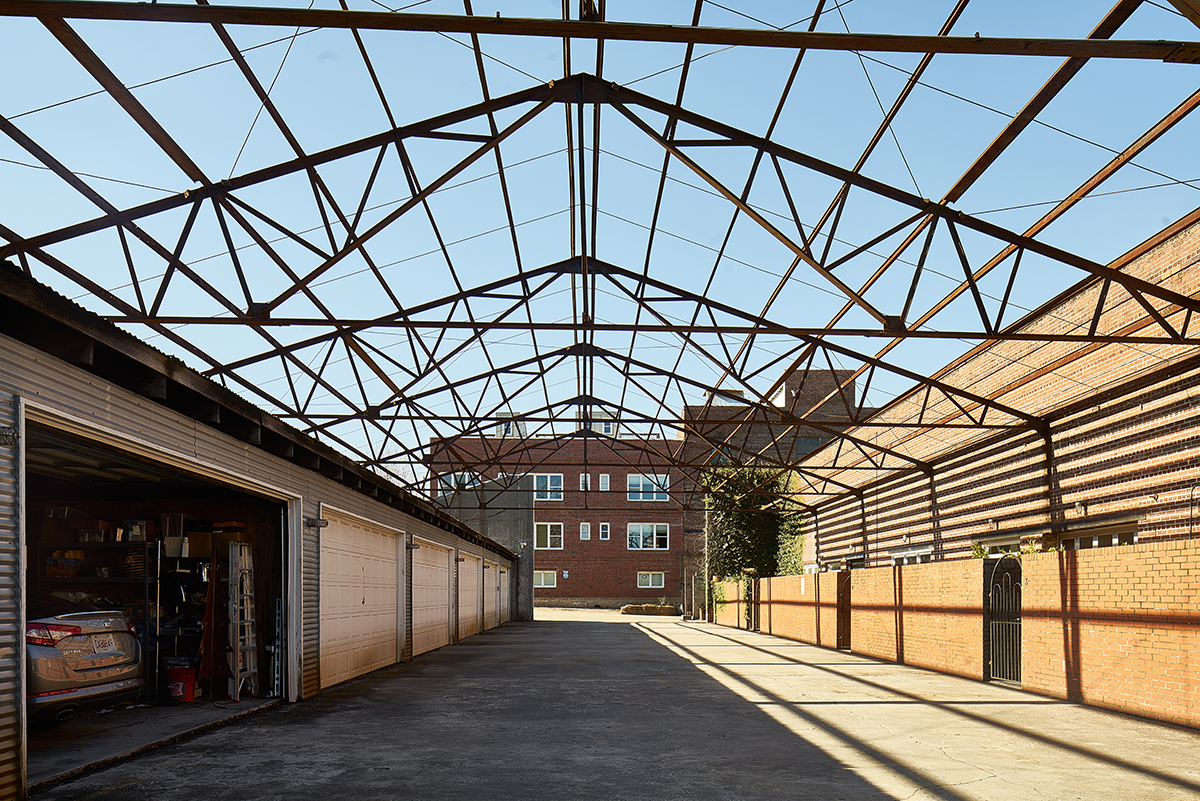
Frame 2: Canon 24mm TSE, Sony A7R-II, Cambo Actus – Canon lens rise, 5mm
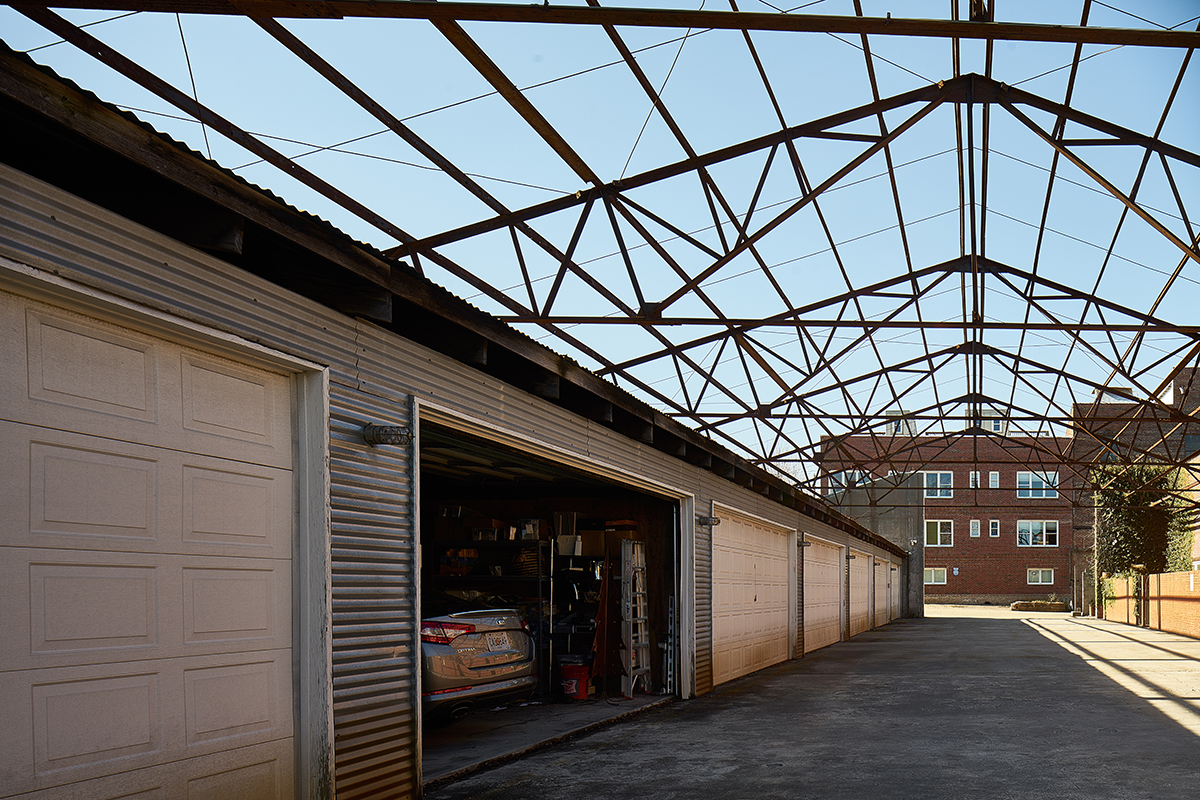
Frame 3: Canon 24mm TSE, Sony A7R-II, Cambo Actus – Cambo body fall 5mm, Canon lens shift left 10mm.
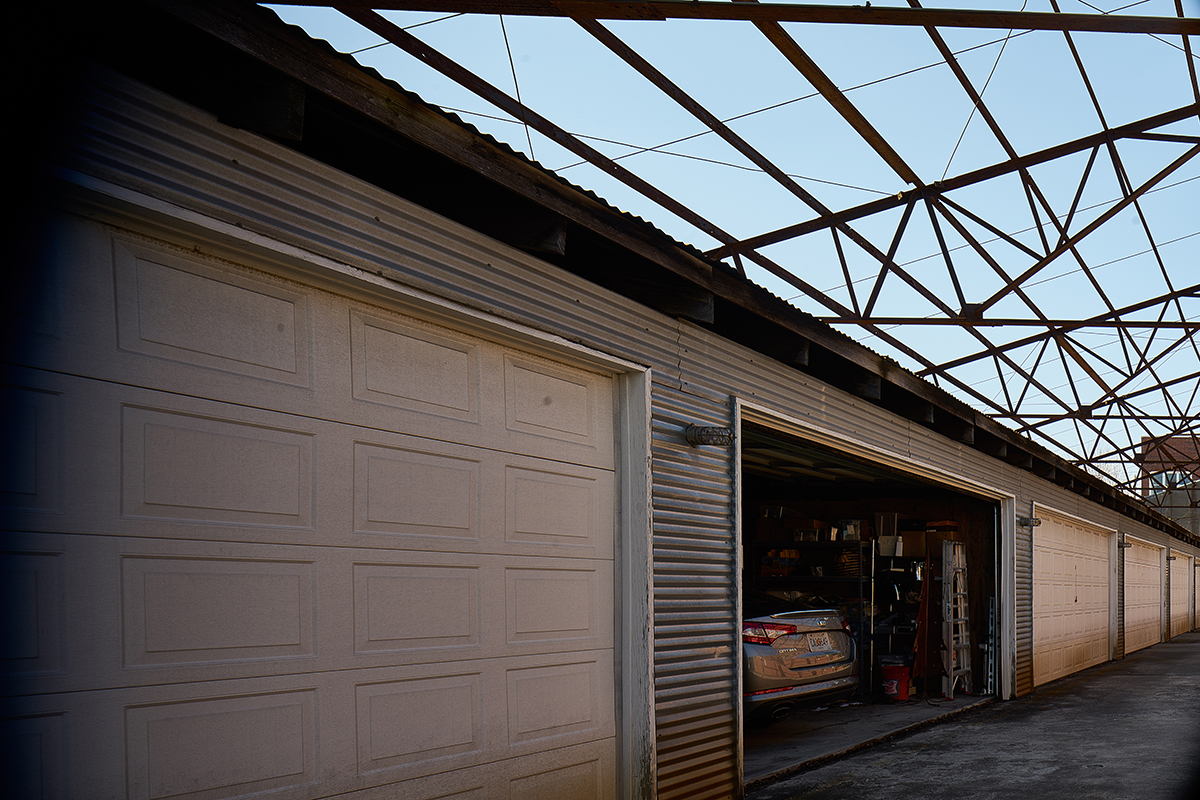
Frame 4: Canon 24mm TSE, Sony A7R-II, Cambo Actus – Cambo body fall 5mm, Canon lens shift left 10mm, plus Cambo body shift right 10mm.
Several things from this. First of all – only Frame 1 and Frame 2 would be possible without the Cambo Actus. Being unable to combine vertical and horizontal shift results in Frame # 3 not being possible without the separate horizontal shift movement of the Cambo Actus. And Frame 4 shows how much further you can horizontally shift with the Cambo Actus past the 12mm shift limit of the Canon 24mm TSE Lens. Now – I have shifted to the point that we’re past the edge of the image circle, and it gets ugly as we get closer to that point, but not necessarily unusable. I did perform an LCC capture of that last frame as you can see below.
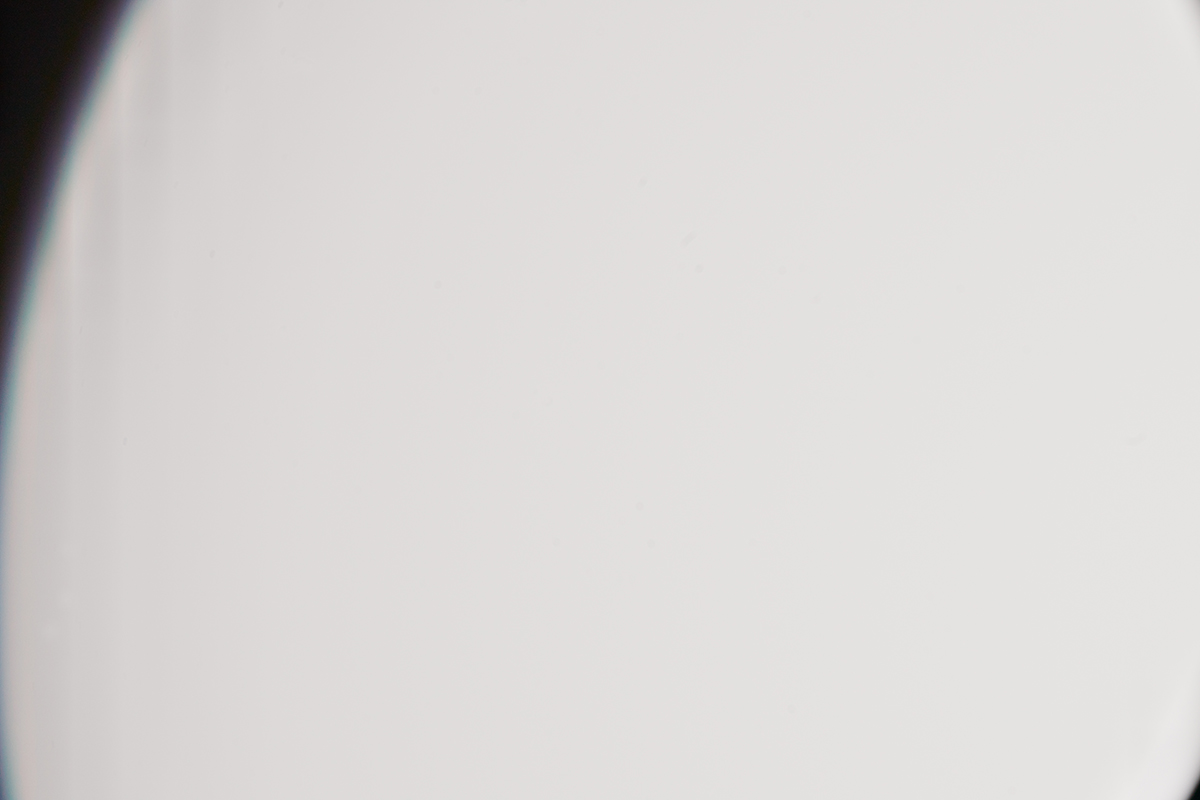
LCC Capture of Canon 24mm TSE, Sony A7R-II, Cambo Actus, with Cambo body fall 5mm, 10mm Canon lens shift left 10mm, plus 10mm Cambo body shift right 10mm.
I’m not sure why I see corner shade on the upper and lower right side, possibly my plexiglass LCC wasn’t covering the entire lens and slipped off a bit on that side. No matter. For those who aren’t familiar with LCC, it is a phenomenal tool that is found in Capture One Pro (LCC stands for Lens Cast Correction). It can remove lens casts caused by image circle to sensor plane restrictions, remove dust, equalize illumination of a scene, and more. After applying the LCC capture to Frame 4 in Capture One Pro, the cast was removed, and I found that the underlying image data possessed some extra grain where the LCC was heavy lifting, but I still considered it usable, and considering the already deep shadow of that part of the image, the same situation with a less shaded area would produce an even better result.
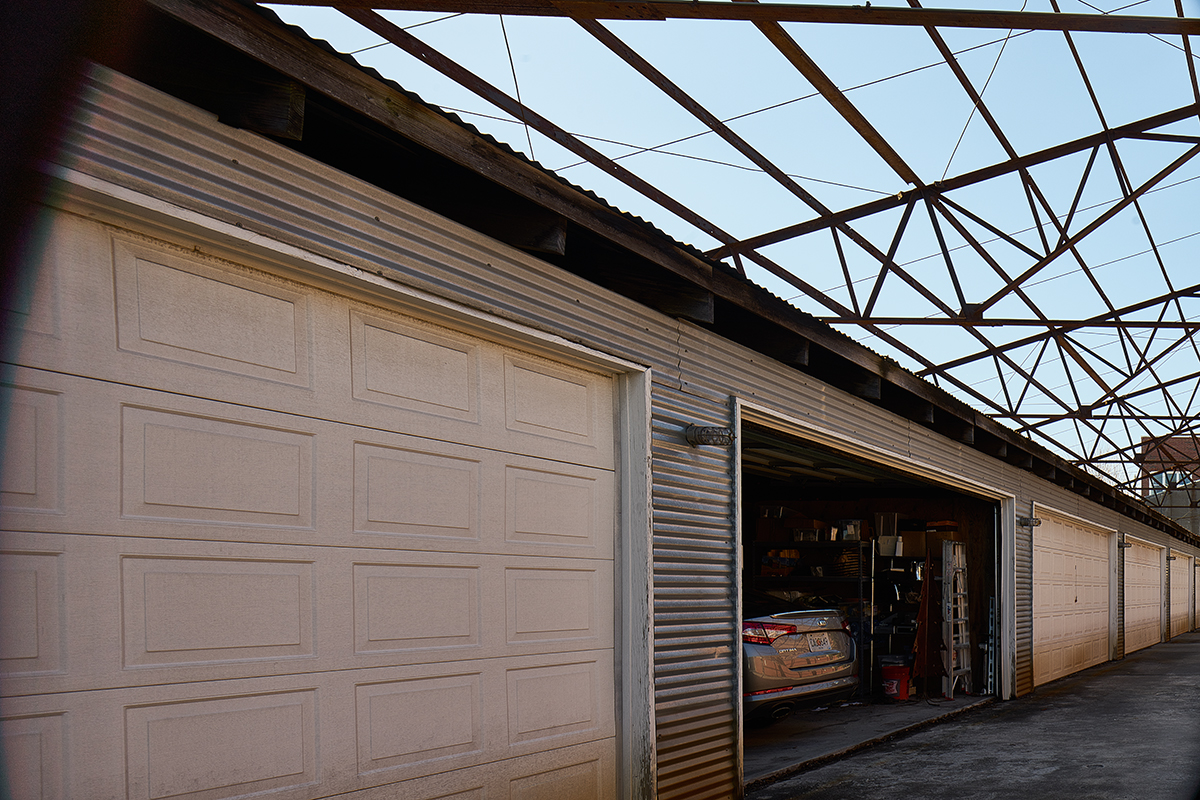
Canon 24mm TSE, Cambo body fall 5mm, Canon lens shift left 10mm, plus 10mm Cambo body shift right 10m, with LCC applied.
If you compare the above frame with the frame above the LCC capture, you can see that, aside from the physical edge of the image circle, the cast produced from the edge of the lens proximity has been removed. Below is a 5 shot stitch with the above captures, including the uncorrected LCC captures at the edge of each side. This resulting image would not be remotely possible with the Canon 24mm TSELens on the Sony A7R-II, without the additional functionality of the Cambo Actus with the Cambo EF Aperture Controller.

Canon 24mm TSE, Sony A7R-II, Cambo Actus – body fall, 5mm, lens shift left 10mm, plus body shift right 10mm. No LCC Applied.
I’ve tried to anticipate what questions may come from this. The battery is a 900mAh lithium polymer battery. It can only be replaced at the factory. That’s unfortunate, but a necessary compromise in the design. It is what it is. We will see what Cambo feels is the expected life of the battery. It does mean some thought may need to go into backup scenarios. If you’ve had the EF Aperture Controller for a year or two, or near whatever the expected end cycle of the battery turns out to be, minimally it would be prudent to have on hand a Canon body of some sort to be able to force change apertures in a pinch. A backup EF Aperture Controller might be a consideration, or at least identifying where they could be rented from (we should have them available in rental soon). We have so far only encountered 2 lenses that were not recognized, our Canon 14mm and our Zeiss 21mm Distagon. Not sure why, as the other Zeiss lenses we have are recognized.
As mentioned, for any wide lenses, the 1 fold, Cambo Wide Angle Bellows is essential. For macro/micro work with extreme bellows extension, there are replacement Cambo Extended Rail options available.
I strongly feel the Cambo EF Aperture Controller, combined with the Cambo Actus, provides an amazing amount of additional functionality with many lenses that are designed for use with the Canon EOS system. It forces one who owns Canon Tilt/Shift lenses to consider what more they could do with those lenses, and also a whole host of other no TS lenses. This product took a long time to get here, but it is shipping now and works well. Pricing is $1,299 and orders are being accepted immediately.
* Additional Cambo Actus related links:
Cambo Actus View Camera
Cambo Actus DB
Cambo 24mm Actar for Actus